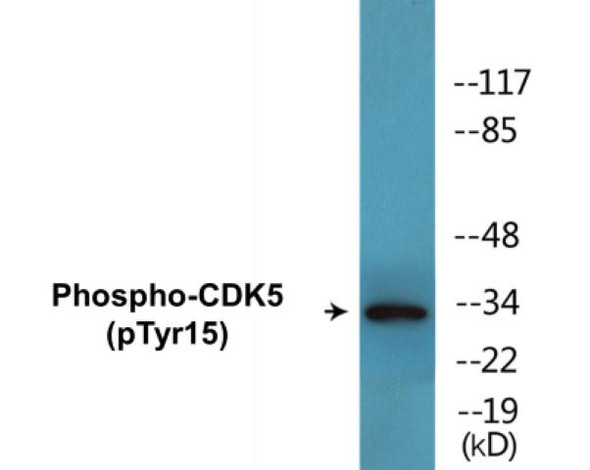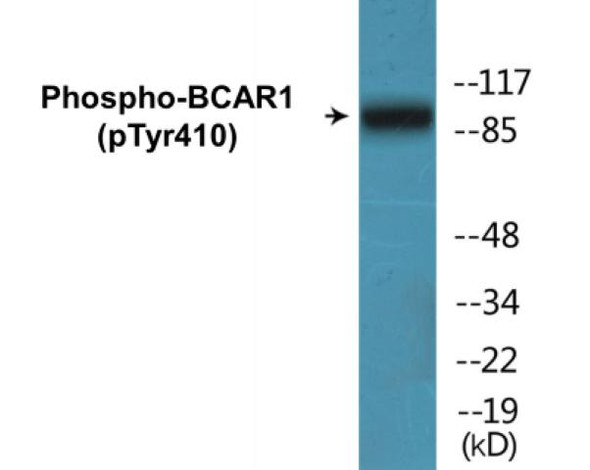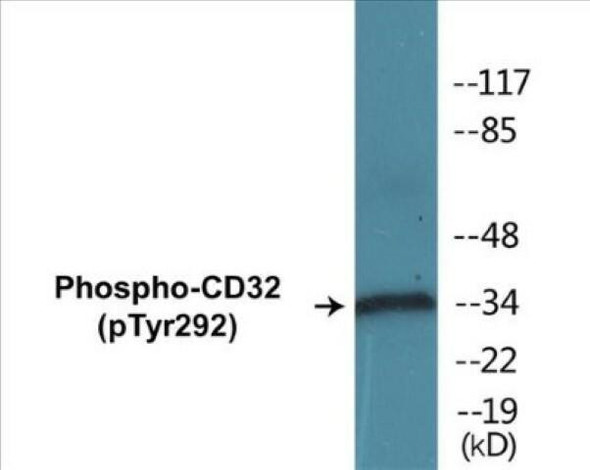Fos (Phospho-Ser362) Fluorometric Cell-Based ELISA Kit
- SKU:
- FBCAB00021
- Product Type:
- ELISA Kit
- ELISA Type:
- Cell Based Phospho Specific
- Reactivity:
- Human
- Mouse
- Rat
- Detection Method:
- Fluorometric
Description
Fos (Phospho-Ser362) Cell-Based ELISA Kit
The Fos (Phospho-Ser362) Cell-Based ELISA Kit is a convenient, lysate- free, high throughput and sensitive assay kit that can monitor Fos phosphorylation and expression profile in cells. The kit can be used for measuring the relative amounts of phosphorylated Fos in cultured cells as well as screening for the effects that various treatments, inhibitors (ie. siRNA or chemicals), or activators have on Fos phosphorylation.
How does our Fos (Phospho-Ser362) Fluorometric Cell-Based ELISA Kit work?
Qualitative determination of Fos (Phospho-Ser362) concentration is achieved by an indirect ELISA format. In essence, Fos (Phospho-Ser362) is captured by Fos (Phospho-Ser362)-specific primary (1°) antibodies while Dye 1-conjugated and Dye 2-conjugated secondary (2°) antibodies bind the Fc region of the 1° antibody. Through this binding, the dye conjugated to the 2° antibody can emit light at a certain wavelength given proper excitation, hence allowing for a fluorometric detection method. Due to the qualitative nature of the Cell-Based ELISA, multiple normalization methods are needed:
| 1. | A monoclonal antibody specific for human GAPDH is included to serve as an internal positive control in normalizing the target RFU values. |
| 2. | An antibody against the nonphosphorylated counterpart of Fos (Phospho-Ser362) is also provided for normalization purposes. The RFU values obtained for non-phosphorylated Fos can be used to normalize the RFU value for phosphorylated Fos. |
Fos (Phospho-Ser362) Fluorometric Cell-Based ELISA Kit -Information
| Product Name: | Fos (Phospho-Ser362) Fluorometric Cell-Based ELISA Kit |
| Product Code/SKU: | FBCAB00021 |
| Description: | The Fos (Phospho-Ser362) Fluorometric Cell-Based Phospho ELISA Kit is a convenient, lysate-free, high throughput and sensitive assay kit that can monitor Fos (Phospho-Ser362) protein phosphorylation and expression profile in cells. The kit can be used for measuring the relative amounts of phosphorylated Fos (Phospho-Ser362) in cultured cells as well as screening for the effects that various treatments, inhibitors (ie. siRNA or chemicals, or activators have on FOS phosphorylation. |
| Dynamic Range: | > 5000 Cells |
| Detection Method: | Fluorometric |
| Storage/Stability: | 4°C/6 Months |
| Reactivity: | Human, Mouse, Rat |
| Assay Type: | Cell-Based ELISA |
| Database Links: | Gene ID: 2353, UniProt ID: P01100, OMIM #: 164810, Unigene #: Hs.25647 |
| Format: | Two 96-Well Plates |
| NCBI Gene Symbol: | FOS |
| Sub Type: | Phospho |
| Target Name: | Phospho-Fos (Ser362) |
Kit Principle
Figure: Schematic representation of Assay Genie Cell-Based Fluorometric ELISA principle
Kit components | Quantity |
| 96-Well Black Cell CultureClear-Bottom Microplate | 2 plates |
| 10X TBS | 24 ml |
| Quenching Buffer | 24 ml |
| Blocking Buffer | 50 ml |
| 15X Wash Buffer | 50 ml |
| Primary Antibody Diluent | 12 ml |
| 100x Anti-Phospho Target Antibody | 60 µl |
| 100x Anti-Target Antibody | 60 µl |
| Anti-GAPDH Antibody | 110 µl |
| Dye-1 Conjugated Anti-Rabbit IgG Antibody | 6 ml |
| Dye-2 Conjugated Anti-Mouse IgG Antibody | 6 ml |
| Adhesive Plate Seals | 2 seals |
Additional equipment and materials required
The following materials and/or equipment are NOT provided in this kit but are necessary to successfully conduct the experiment:
- Fluorescent plate reader with two channels at Ex/Em: 651/667 and 495/521
- Micropipettes capable of measuring volumes from 1 µl to 1 ml
- Deionized or sterile water (ddH2O)
- 37% formaldehyde (Sigma Cat# F-8775) or formaldehyde from other sources
- Squirt bottle, manifold dispenser, multichannel pipette reservoir or automated microplate washer
- Graph paper or computer software capable of generating or displaying logarithmic functions
- Absorbent papers or vacuum aspirator
- Test tubes or microfuge tubes capable of storing ≥1 ml
- Poly-L-Lysine (Sigma Cat# P4832 for suspension cells)
- Orbital shaker (optional)
Kit Protocol
This is a summarized version of the kit protocol. Please view the technical manual of this kit for information on sample preparation, reagent preparation and plate lay out.
| 1. | Seed 200 µl of desired cell concentration in culture medium into each well of the 96-well plates. For suspension cells and loosely attached cells, coat the plates with 100 µl of 10 µg/ml Poly-L-Lysine (not included) to each well of a 96-well plate for 30 minutes at 37°C prior to adding cells. |
| 2. | Incubate the cells for overnight at 37°C, 5% CO2. |
| 3. | Treat the cells as desired. |
| 4. | Remove the cell culture medium and rinse with 200 µl of 1x TBS, twice. |
| 5. | Fix the cells by incubating with 100 µl of Fixing Solution for 20 minutes at room temperature. The 4% formaldehyde is used for adherent cells and 8% formaldehyde is used for suspension cells and loosely attached cells. |
| 6. | Remove the Fixing Solution and wash the plate 3 times with 200 µl 1x Wash Buffer for 3 minutes. The plate can be stored at 4°C for a week. |
| 7. | Add 100 µl of Quenching Buffer and incubate for 20 minutes at room temperature. |
| 8. | Wash the plate 3 times with 1x Wash Buffer for 3 minutes each time. |
| 9. | Dispense 200 µl of Blocking Buffer and incubate for 1 hour at room temperature. |
| 10. | Wash 3 times with 200 µl of 1x Wash Buffer for 3 minutes each time. |
| 11. | Add 50 µl of Primary Antibody Mixture P to corresponding wells for Fos (Phospho-Ser362) detection. Add 50 µl of Primary Antibody Mixture NP to the corresponding wells for total Fos detection. Cover the plate with parafilm and incubate for 16 hours (overnight) at 4°C. If the target expression is known to be high, incubate for 2 hours at room temperature. |
| 12. | Wash 3 times with 200 µl of 1x Wash Buffer for 3 minutes each time. |
| 13. | Add 50 ul of Secondary Antibody Mixture to corresponding wells and incubate for 1.5 hours at room temperature in the dark. |
| 14. | Wash 3 times with 200 µl of 1x Wash Buffer for 3 minutes each time. |
| 15. | Read the plate(s) at Ex/Em: 651/667 (Dye 1) and 495/521 (Dye 2). Shield plates from direct light exposure. |
| 16. | Wash 3 times with 200 µl of 1x Wash Buffer for 5 minutes each time. |
Fos (Phospho-Ser362) - Protein Information
| UniProt Protein Function: | Fos: a proto-oncogenic transcription factor of the bZIP family. Dimerizes with proteins of the JUN family, thereby forming the transcription factor complex AP-1. FOS proteins function as regulators of cell proliferation, differentiation, and transformation. In some cases, expression of FOS has also been associated with apoptotic cell death. Expression increases upon a variety of stimuli, including growth factors, cytokines, neurotransmitters, polypeptide hormones, stress and cell injury. |
| UniProt Protein Details: | Protein type:Motility/polarity/chemotaxis; DNA-binding; Transcription factor; Oncoprotein Chromosomal Location of Human Ortholog: 14q24.3 Cellular Component: nucleoplasm; transcription factor complex; neuron projection; membrane; endoplasmic reticulum; nucleus; cytosol Molecular Function:protein binding; double-stranded DNA binding; transcription factor activity; transcription factor binding Biological Process: transcription from RNA polymerase II promoter; response to gravity; response to cAMP; positive regulation of osteoclast differentiation; positive regulation of transcription, DNA-dependent; response to toxin; stress-activated MAPK cascade; response to lipopolysaccharide; toll-like receptor 3 signaling pathway; female pregnancy; toll-like receptor 10 signaling pathway; toll-like receptor 5 signaling pathway; regulation of transcription factor activity; transforming growth factor beta receptor signaling pathway; conditioned taste aversion; DNA methylation; inflammatory response; toll-like receptor 4 signaling pathway; aging; response to corticosterone stimulus; response to drug; response to light stimulus; nervous system development; MyD88-independent toll-like receptor signaling pathway; sleep; toll-like receptor 2 signaling pathway; cellular response to hormone stimulus; regulation of transcription from RNA polymerase II promoter; MyD88-dependent toll-like receptor signaling pathway; response to mechanical stimulus; response to cytokine stimulus; cellular response to extracellular stimulus; toll-like receptor signaling pathway; innate immune response; positive regulation of transcription from RNA polymerase II promoter; response to cold; toll-like receptor 9 signaling pathway; response to progesterone stimulus |
| NCBI Summary: | The Fos gene family consists of 4 members: FOS, FOSB, FOSL1, and FOSL2. These genes encode leucine zipper proteins that can dimerize with proteins of the JUN family, thereby forming the transcription factor complex AP-1. As such, the FOS proteins have been implicated as regulators of cell proliferation, differentiation, and transformation. In some cases, expression of the FOS gene has also been associated with apoptotic cell death. [provided by RefSeq, Jul 2008] |
| UniProt Code: | P01100 |
| NCBI GenInfo Identifier: | 120470 |
| NCBI Gene ID: | 2353 |
| NCBI Accession: | P01100.1 |
| UniProt Secondary Accession: | P01100,P18849, A8K4E2, B4DQ65, |
| UniProt Related Accession: | P01100 |
| Molecular Weight: | 380 |
| NCBI Full Name: | Proto-oncogene c-Fos |
| NCBI Synonym Full Names: | FBJ murine osteosarcoma viral oncogene homolog |
| NCBI Official Symbol: | FOS |
| NCBI Official Synonym Symbols: | p55; AP-1; C-FOS |
| NCBI Protein Information: | proto-oncogene c-Fos; activator protein 1; cellular oncogene c-fos; G0/G1 switch regulatory protein 7; FBJ murine osteosarcoma viral (v-fos) oncogene homolog (oncogene FOS) |
| UniProt Protein Name: | Proto-oncogene c-Fos |
| UniProt Synonym Protein Names: | Cellular oncogene fos; G0/G1 switch regulatory protein 7 |
| Protein Family: | Fos-related antigen |
| UniProt Gene Name: | FOS |
| UniProt Entry Name: | FOS_HUMAN |









